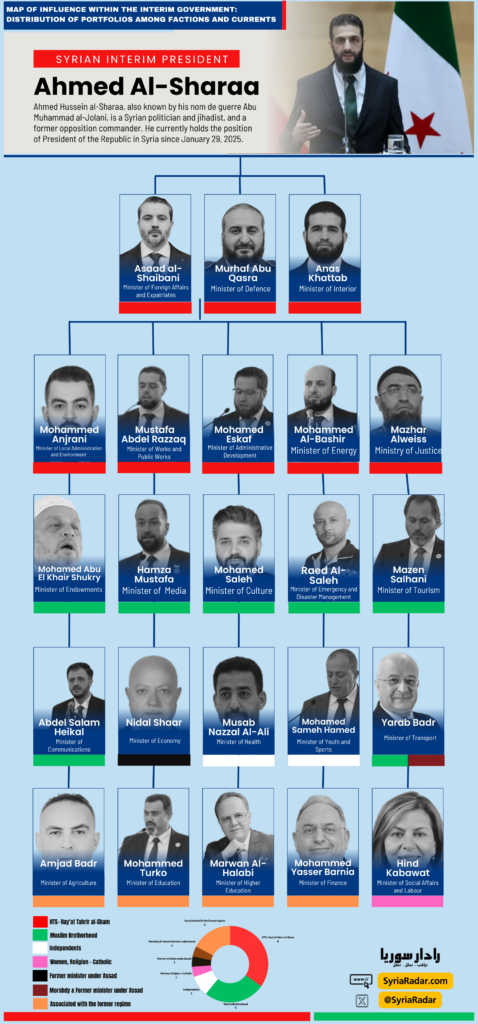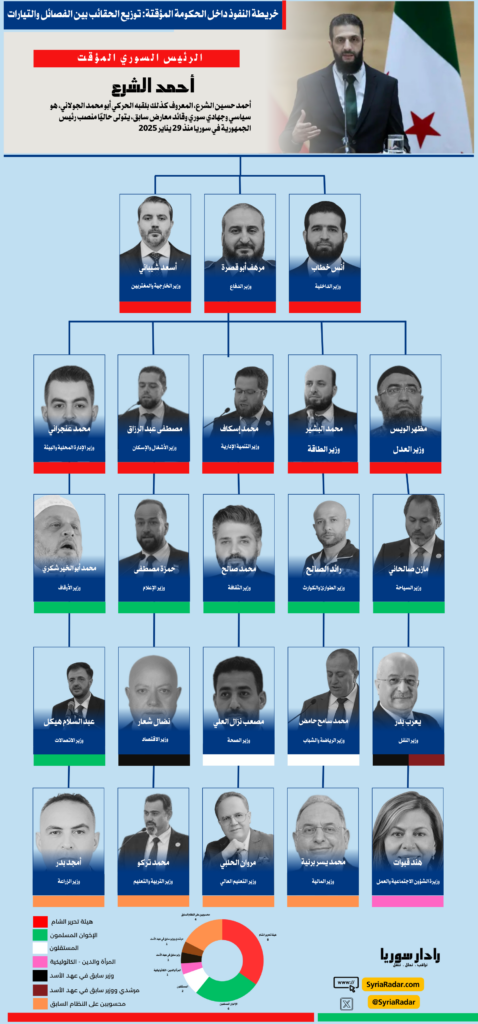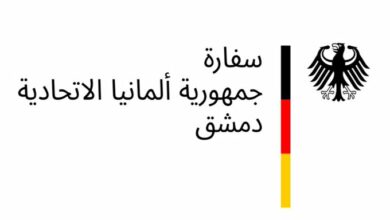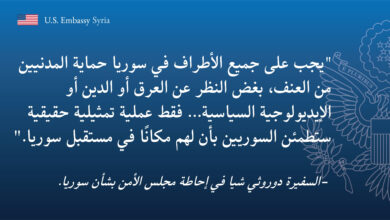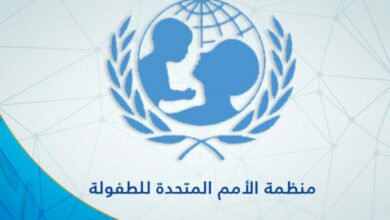🗺️ Map of Influence within Syria’s Interim Government, Distribution of Portfolios among Factions and Currents
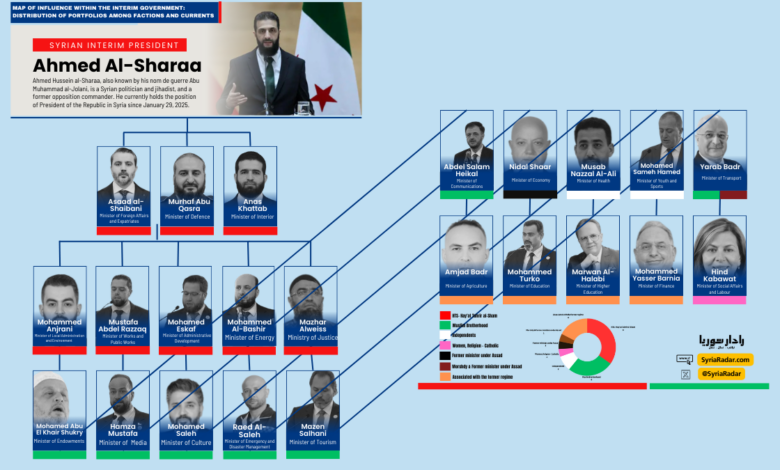
By the Syria Radar Political Analysis Desk
On January 29, 2025, Ahmed Al-Sharaa, better known by his nom de guerre Abu Muhammad al-Jolani, assumed the presidency of Syria under a newly formed interim government. While the appointment itself marked a major shift in Syria’s political trajectory, the true dynamics of power inside this government are best understood not by names or titles—but by colors, affiliations, and loyalties.
This infographic offers a breakdown of the cabinet’s composition, revealing a highly factional structure. What emerges is a government shaped not by technocratic balance or democratic representation, but by field control, ideological networks, and legacy actors—each embedded in the ministries they now govern.
🔴 HTS – From Militant Power to Political Authority
The most striking feature is the dominance of Hay’at Tahrir al-Sham (HTS). Represented in red, HTS controls nearly all sovereign ministries: Defense, Interior, and Foreign Affairs. These portfolios are critical for the state’s survival and sovereignty—making HTS not just a kingmaker, but arguably the government’s central pillar. Their grip signals a continuation of territorial dominance into bureaucratic consolidation.
🟢 The Muslim Brotherhood’s Strategic Soft Power
Marked in green, the Muslim Brotherhood holds significant sway over the Ministries of Media, Culture, and Tourism. These are not merely symbolic posts; they influence public discourse, ideological alignment, and soft image-building. The Brotherhood’s historical roots in Syria, combined with its organizational depth, make its role central in shaping the state’s external narrative and internal cohesion.
⚪ Technocrats & Independents: Present, but Peripheral
A handful of ministers, shown in white, are independents or technocrats—including those heading Health and Youth Affairs. Their inclusion suggests a gesture toward professionalism, but their influence is marginal in comparison to the heavily politicized portfolios.
🌸 Inclusion of Religious and Gender-Based Representation
One ministry—Social Affairs and Labor—is led by a figure marked in pink, indicating a Catholic woman. While the inclusion is symbolically notable in a male-dominated and Muslim-majority context, it remains an exception rather than a structural shift toward diversity.
⚫🟤🟠 Legacy of the Assad Regime Lives On
Perhaps most surprising is the inclusion of figures linked to the former Assad regime. These include:
- ⚫ A former Assad-era minister leading the Ministry of Economy.
- 🟤 A Morshdy – and former Assad minister now heading the Ministry of Transport.
- 🟠 Other regime-affiliated personalities running Finance and other sensitive departments.
While their reappearance may signal experience or an attempt at pragmatism, it also raises red flags about continuity of the old guard under new branding.
⚖️ A Cabinet of Convenience or a Coalition of Control?
This diverse, but deeply factional distribution of ministries prompts a critical question:
Is this truly a unity government representing the spectrum of Syrian society, or is it simply a repackaging of power centers in official form?
The reality is more complex. While the cabinet appears cohesive on paper, the varied loyalties, ideological divides, and historical baggage of its members may undermine its functionality. What remains to be seen is whether these factions can cooperate on governance—or whether internal rivalries will paralyze the government from within.
📝 Prepared by the Syria Radar Political Analysis Desk
🌐 SyriaRadar.com | @SyriaRadar
📩 Contact: Editor@SyriaRadar.com
